Category: News

November is Housing Month, a reminder of how important an issue housing is for everyone and how many challenges a lot of people face when trying to find somewhere affordable and accessible to call home. Young adults, families, and seniors are all affected by the rising housing costs in Edmonton. Governments at all levels have realized that housing is a growing issue for many people and are committing new funds and programs to help address these issues. Despite the growing efforts, many people still struggle with simple necessities that so many take for granted.
“If you spend more than 30 percent of your gross monthly income on housing, you’re considered below the poverty line,” says GEF Seniors Housing CEO Raymond Swonek. GEF Seniors Housing is just one organization participating in Housing Month efforts and activities to promote the need for more affordable housing in Edmonton.
“For many Edmontonians, spending only 30 percent of their income on housing seems like an impossible dream. We serve low-income seniors and offer them affordable housing options. We know the need in Edmonton is great, so we take part in Housing Month to help make sure no one ever has to worry about where they will call home.”
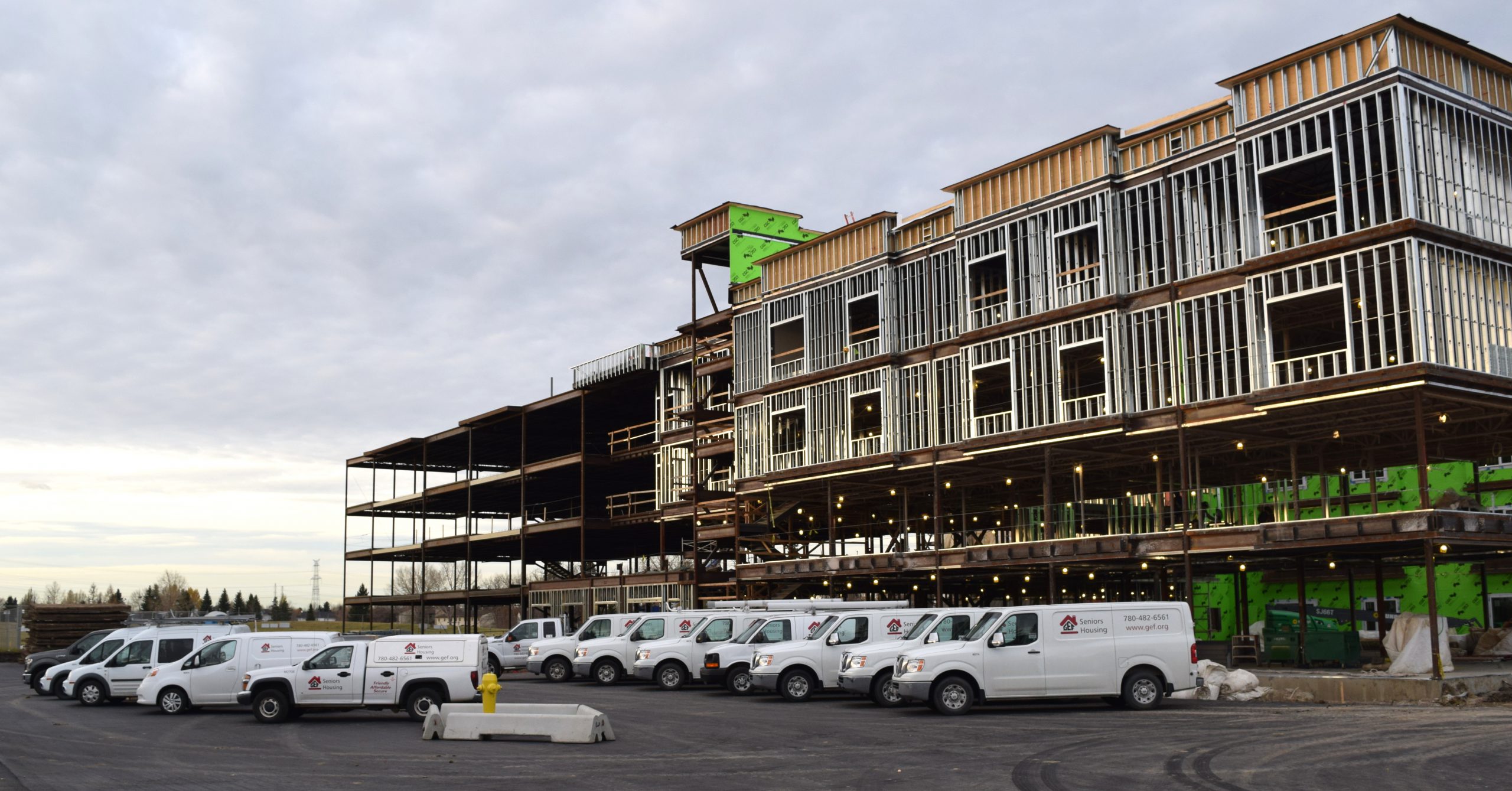
Housing Month started in Toronto with National Housing Day back in 1998. The City of Toronto called out to other municipalities to join them in recognizing the need for affordable housing options in their cities. The City of Edmonton decided to expand on the idea of National Housing Day into a whole month of events, promotions, and publications to educate and inform what affordable and social housing is, how affordable and social housing programs benefit neighbourhoods, and how individuals and communities can help housing organizations serve the people who need the help most.
GEF Seniors Housing is working with the City of Edmonton and other housing organizations such as Homeward Trust, Capital Region Interfaith Housing Initiative, and Capital Region Housing Corporation on a campaign to spur discussions around affordable housing in Edmonton, how to bring more affordable housing to different Edmonton communities, and what steps should be taken to help see more affordable housing projects break ground. Housing Month’s campaign also includes the National Housing Day Luncheon, hosted by Homeward Trust, on Wednesday, November 22, 2017, at the Coast Edmonton Plaza Hotel.
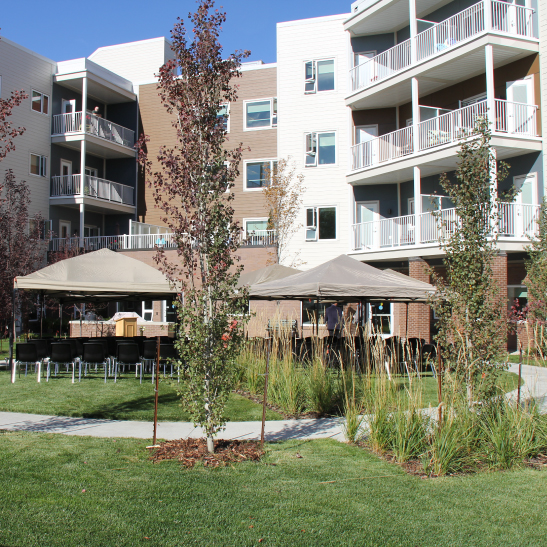
“The partnerships we have with the other housing organizations for Housing Month is part of what makes this campaign so strong,” says Swonek. “Every one of these groups does amazing work in this city and is committed to seeing more affordable housing options available to Edmontonians who are in need. I’m so proud to be part of a city and a community that takes housing so seriously.”
Housing Month seeks to highlight current affordable housing projects being built around Edmonton, showcase current affordable housing buildings already established in the city, and exhibit much of the progress made from the support of all levels of government. Though Housing Month is driven by the City of Edmonton, the Provincial Government, and the Federal Government both have worked on major housing strategies that have benefited Edmonton greatly and even started releasing funds already so that housing organizations can begin work on creating new homes.
“I’m optimistic about the future of housing when I see how much all these different organizations and different governmental bodies are all collaborating with this common goal,” says Swonek. “Housing Month displays so much of the progress we’ve made over the years. I’m excited for more communities to become invested in affordable housing and Housing Month is the perfect way to make those connections and build that support.”
For the past six years, GEF Seniors Housing has taken part in the K-Days Parade festivities. In 2015, GEF Seniors Housing won the best not-for-profit float award. The float saw mascots Harold and Mildred standing next to a small house and waving to the crowds. In 2016, Harold and Mildred went to prom with a float that celebrated the class of 1959 (the year GEF Seniors Housing was established). This year, the K-Days Parade marches through downtown Edmonton starting at 10:00 a.m. on July 21, 2017, and Harold and Mildred are packing up the car and taking a road trip across Canada to celebrate the country’s 150th Anniversary.
“Any chance we get to connect with the communities we operate in, we want to take advantage of it,” says GEF Seniors Housing Public Relations Manager Christopher Schieman. “The K-Days Parade allows thousands of Edmontonians and other Albertans from surrounding areas to see who we are and want to connect with us.”

GEF Seniors Housing staff volunteer to put on the mascot costumes and dress up to the parade float’s theme. Schieman remembers the 2016 parade and trying to find leisure suits and retro-style prom dresses for the more than a dozen volunteers who walked alongside the float.
“The Communications team spent a day digging through the racks at Value Village looking for dresses and suits,” Schieman says with a laugh. “We donated everything right back after the parade to make sure that the community members who shop at that Value Village can find more long-term use for the clothing.”
This year, the staff volunteers in the parade will be dressing up in Canadian pride summer clothing to walk alongside the float being built to look like a car surrounded by different Canadian monuments. Schieman points out that each year, the audience members most excited to see the float always surprise him.
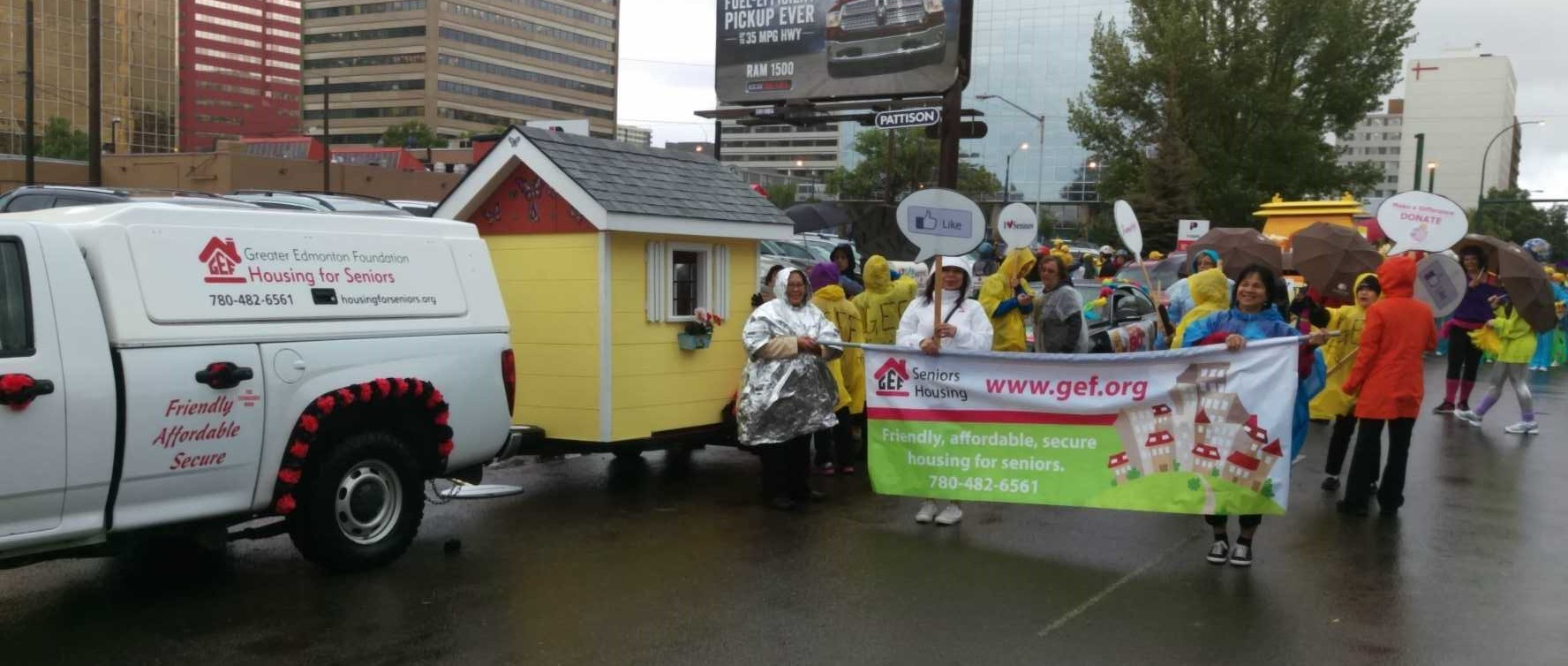
“The kids watching the parade love Harold and Mildred,” says Schieman. “They wave really big and yell, ‘It’s Grandma and Grandpa!’ It’s a nice reminder of how important grandparents are to families and how what we do at GEF Seniors Housing helps so many people.”
Schieman always volunteers to ride shotgun in the truck pulling the float so he can snap a few pictures of the audience for social media as they drive by. He explains it’s one of his favourite events to work on over the summer and not just for the big smiles on the faces of everyone watching the parade.
“It doesn’t hurt to be out of the office on a beautiful summer morning,” jokes Schieman. “This is a great way to spread the message about the need for affordable housing for seniors. Everybody’s outside, feeling good, and ready to celebrate. We love being part of festivities like the K-Days Parade and being an important part of the Edmonton community.”
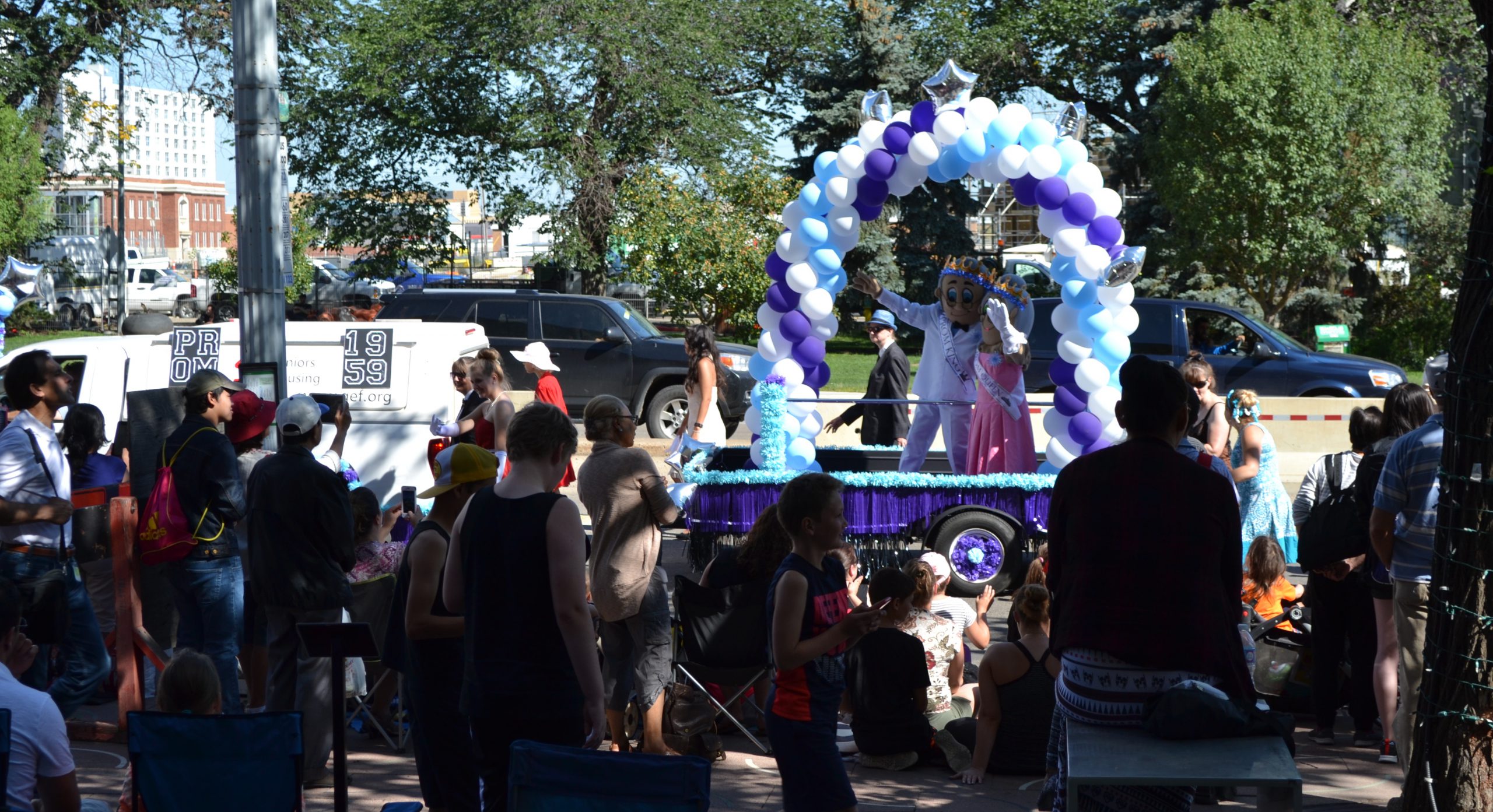
A new bench was placed outside of Cathedral Close on June 29, 2017, and while this isn’t normally something to pay special attention to, this bench represents something more than simply somewhere to stop for a quick rest. As part of the City of Edmonton’s Hello, How Are You? campaign to address urban isolation and mental health, the Buddy Benches were developed by the City Lab as an open invitation to make a connection.
Edmonton Transportation Service (ETS) donated 20 brand new benches to be used as Buddy Benches all over Edmonton as a means to try and address social isolation. The idea is that people can stop and sit on the bench as a signal that they’re looking for someone to talk to. Anyone else can then join the person on the bench, ask how they are, and start a conversation. Most Buddy Benches are painted bright colours with the hashtag #SayHelloYeg to signal that this bench is meant for connections.
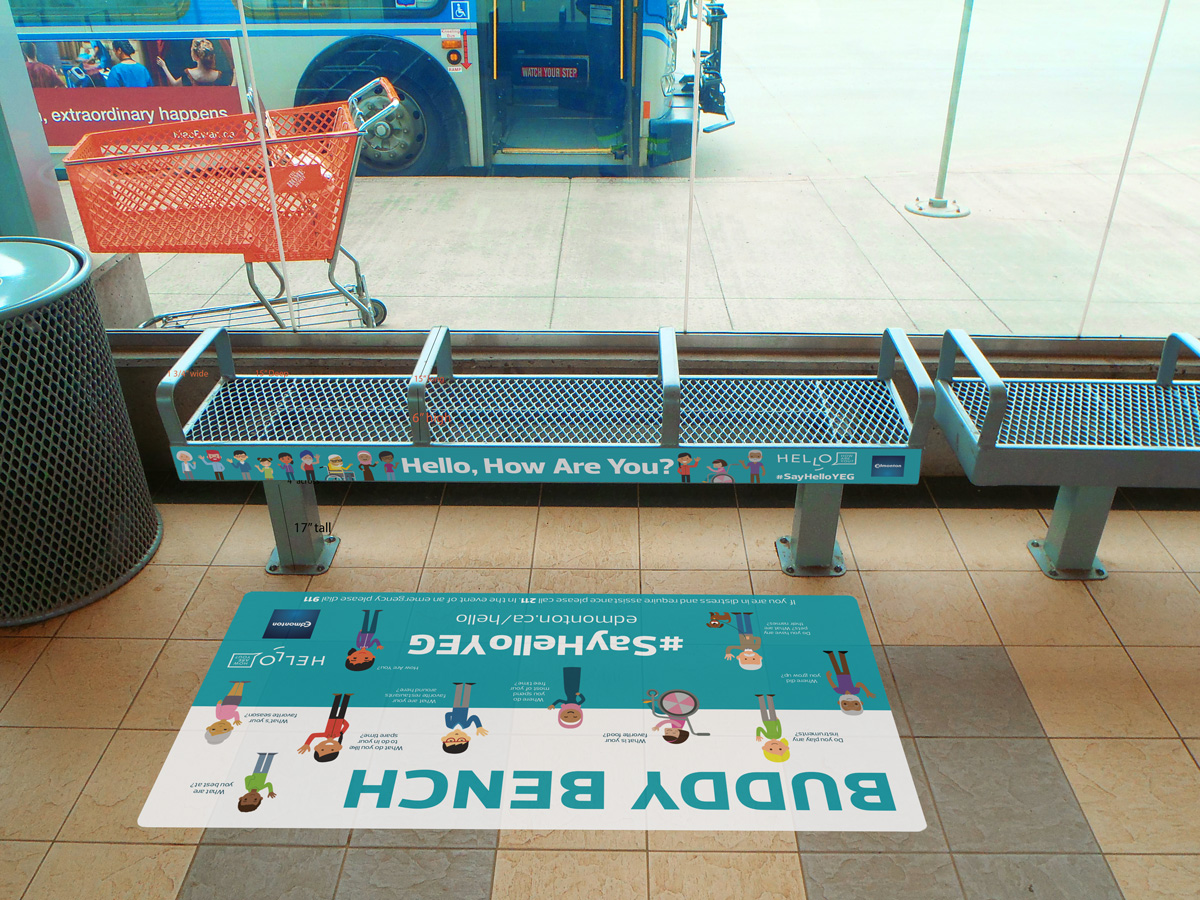
“When the bench was being installed, a lot of the tenants were asking what it was about, and after I explained the Buddy Bench program they loved the idea,” says Colleen Simpson, Assistant Manager with Cathedral Close. “We have a couple of our benches and a gazebo on our property, but the Buddy Bench is allowing more connection with the community, which is important for a lot of people.”
Areas being targeted for Buddy Benches include high-density neighbourhoods with lots of pedestrian traffic and close to seniors’ residential buildings. Seniors are increasingly a population at risk for social isolation and more organizations are taking steps to try and address the isolation issues and help prevent any of the adverse health effects that follow social isolation.
“In the short time the Buddy Bench has been in front of Cathedral Close, I’ve already seen a few seniors sit on it, and these are seniors I don’t recognize,” says Simpson. “People from the community are already trying to make more connections and I’m excited to see some of the interactions happen.”

Jim Murland came back to Edmonton in 1948 after serving in the Second World War and he found his first home in the McKernan neighbourhood in the city’s southeast. After he settled in his new home, one of the first jobs he had was adding stucco to the outer brick wall of Knox Metropolitan United Church in the Garneau neighbourhood. Now at 98 years of age, Murland lives at Knox-Met Manor, an apartment building currently being managed by GEF Seniors Housing that was originally built in 1984 in part with help from Knox Metropolitan Church.
The church closed its doors in 2016 with plans to tear down the original building for a new condo development. For Murland, some of his memories of the church that first opened its doors in 1928 stem from one of the most distinctive design features of the building. “I remember attending sermons at the church and always looking up at the stained glass window,” says Murland.

Knox-Met Manor was one of the recipients of a section of the stained glass window because of its close ties to the church. Of the more than 80 tenants living in Knox-Met Manor, many share Murland’s enthusiasm about receiving the window.
Joyce Dahl has been living at Knox-Met Manor since 2000 and was the building’s tenant representative to the church group. She explains that preserving the role that the church played in the development of the property and the connection between the church and the Manor is one to be celebrated. The church played a significant role not just in the history of the Garneau neighbourhood but in Edmonton as a whole.
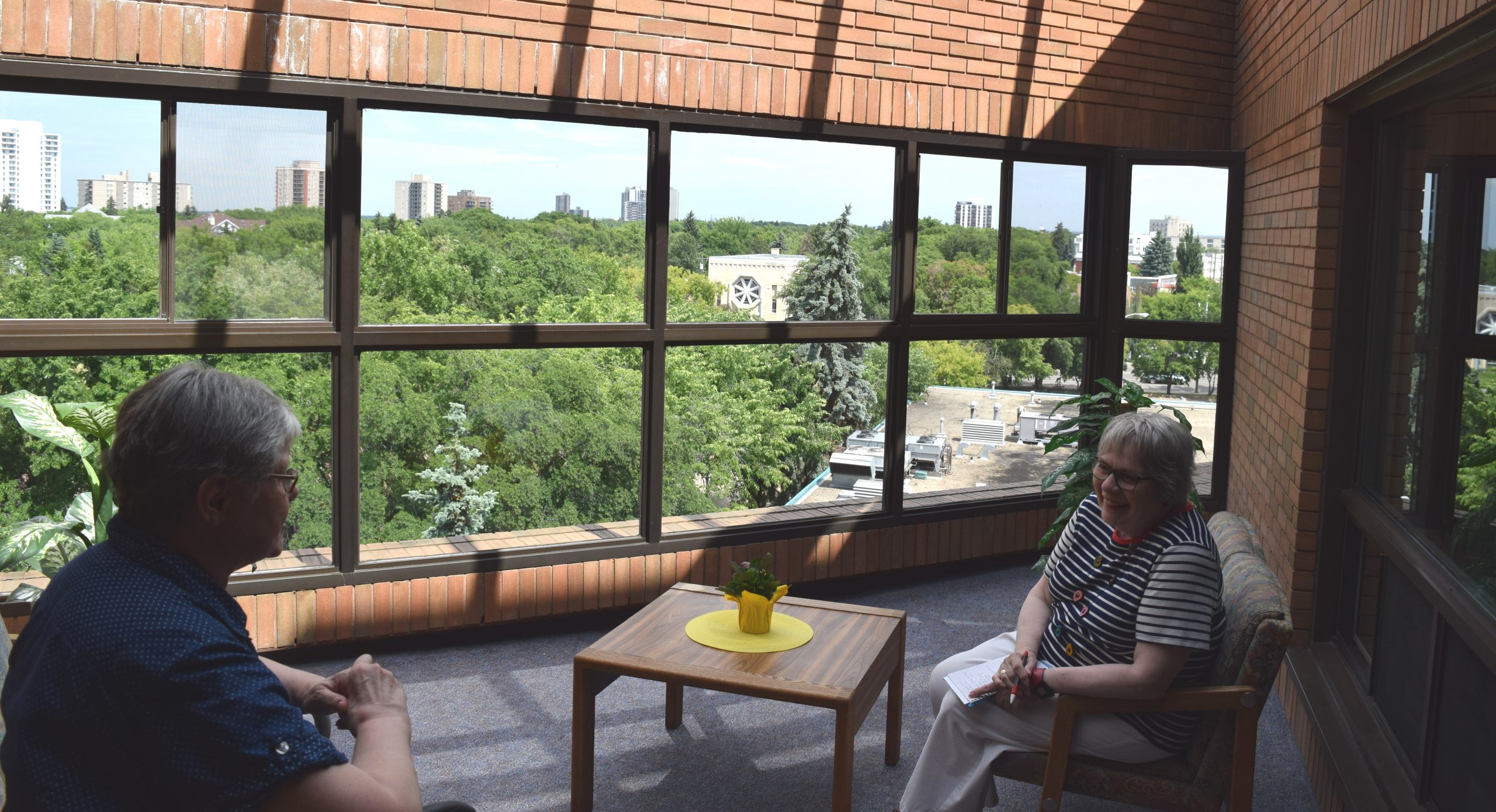
One piece of history is the role Knox Metropolitan United Church played in the Edmonton chapter of Amnesty International. Before she moved into Knox-Met Manor, Florence Miller was a member of Amnesty International and would take the bus from her north-side Edmonton home to the Garneau neighbourhood for meetings. She recollects the different events the Edmonton chapter of Amnesty International played in welcoming new communities to the city from all around the world and the work done to help ensure that these new groups knew they were welcome.
“Even now, there’s still a lot of diversity in [Knox-Met Manor],” Miller says. “We have neighbours from Egypt, Pakistan, South Korea, Papua New Guinea, all over. I want to make sure this piece the church’s stained glass window has a place in our building to commemorate the history of Edmonton being a welcoming city.”
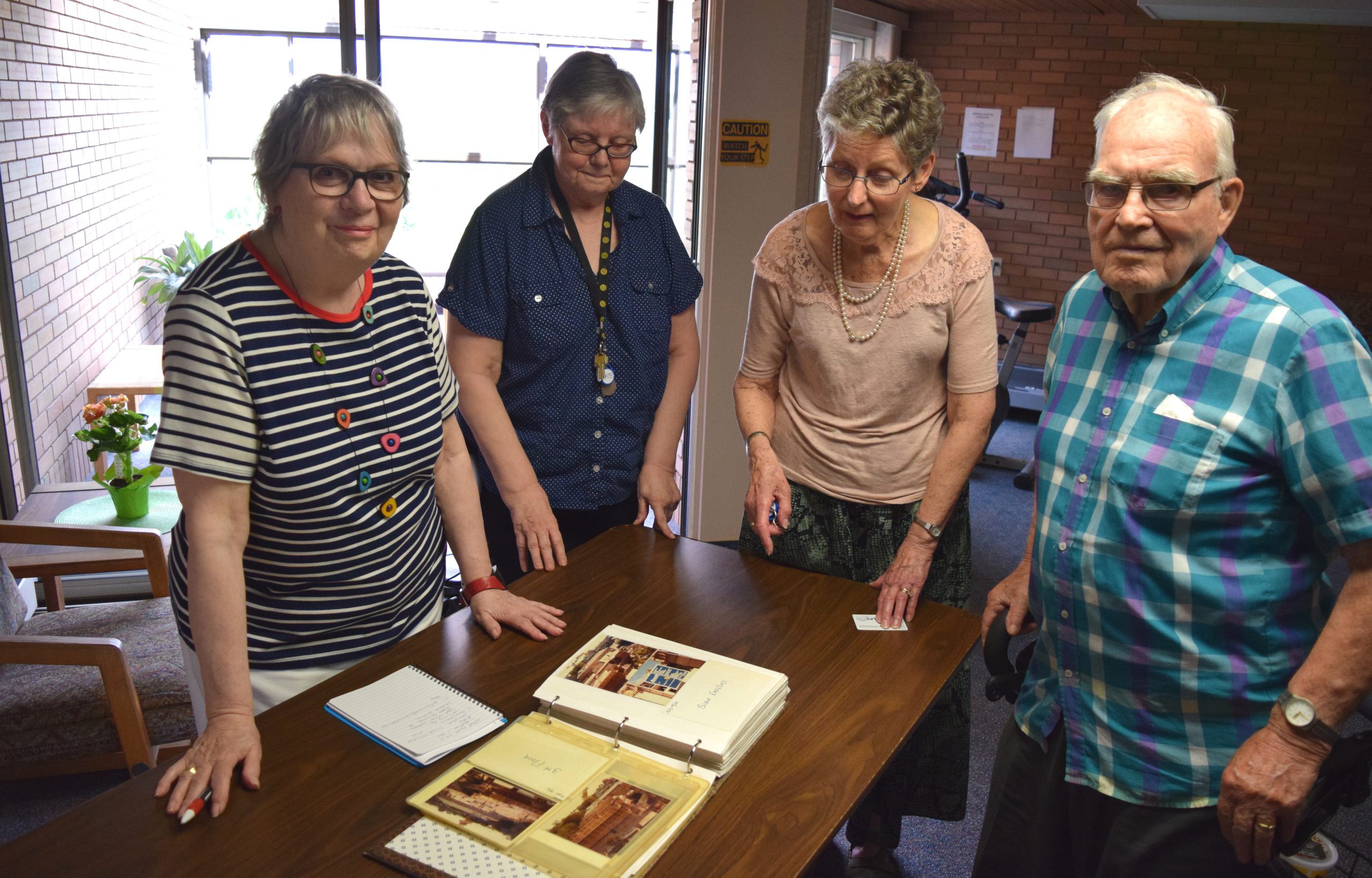
Gail Brown is part of a group of tenants at Knox-Met Manor who want to see the donated piece of stained glass find a permanent place displayed in the building. Though only living in Knox-Met Manor for the past two years and having no direct connection to the church, Brown still feels a responsibility to preserve this piece of the community’s history.
“I’m in very strong support of public art that shows the history of our city,” says Brown. “The church is empty now but it helped build this place that so many people call home. We have a piece of the architecture and it’s something amazing that needs to be respected, preserved and its history maintained.”
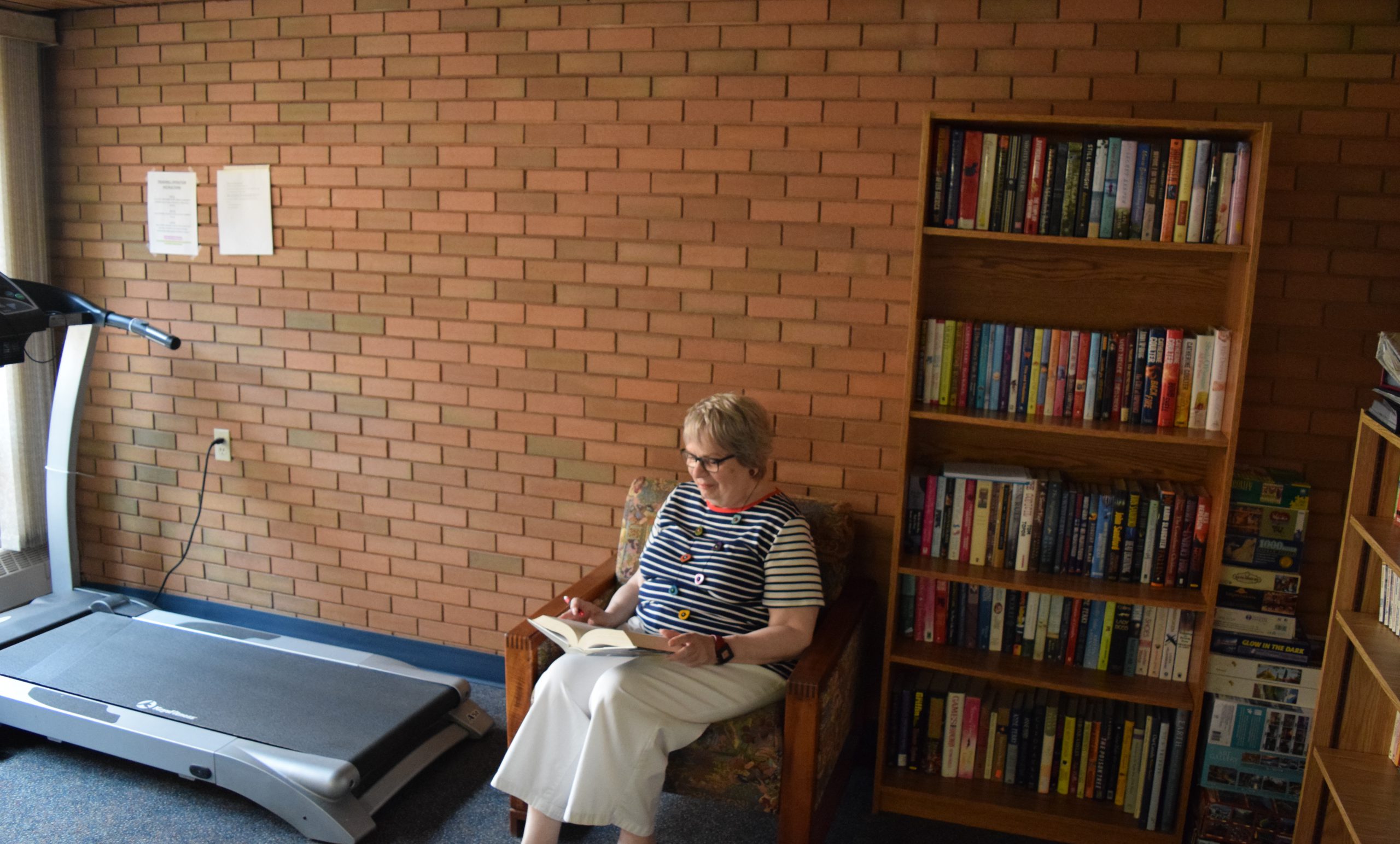
Lorna Etwell points out that the seventh floor of Knox-Met Manor is a perfect spot to mount the stained glass. It’s a shared space where tenants go to do their laundry, read a book, hop on an exercise bike, do a puzzle, or meet in the sunroom that overlooks the Garneau neighbourhood and right to the spot where the empty Knox Metropolitan United Church stands for the time being. She recalled that after some discussion it was determined that the brick wall next to the bookcase was the best location to proudly display the piece of community history.
“It’s an honour to have received this gift from the church,” says Etwell. “We want to do right by making sure it has a place where it can be appreciated.”

This is a story that was originally published in the February 2017 edition of Edmonton Prime Times.
Shanika Donalds knows better than most the harsh impacts that social isolation can have on seniors. Her role with GEF Seniors Housing as Community Supports Manager was created to help address the issue of social isolation in the seniors living in GEF Seniors Housing homes. For her, there is no such thing as a typical day. From one-on-one consultations to large-scale presentations during building resident meetings, Donalds and the rest of the Community Support teamwork to find the underlying causes of the individual cases of social isolation and how to best work through those issues.
“One of our main operations as Community Supports is to help address seniors isolation in connection with quality of life, which in short is assessing if a person’s environment fulfills their needs,” says Donalds. “When an individual loses a partner or friends, the number of meaningful interactions declines, and this can include interactions with essential services like doctors and dentists. What we want to do is help those who are feeling isolated make those connections they need and raise their quality of life.”
Donalds and GEF Seniors Housing are just one group that make up the Pan Edmonton Group Addressing Social Isolation in Seniors (PEGASIS), a collective of seven seniors-serving agencies operating in Edmonton. The group is coordinated by the Edmonton Seniors Coordinating Council (ESCC), which facilitates collaboration among seniors-serving organizations across Edmonton to address seniors’ sector issues in the city. Other organizations involved with PEGASIS include the Edmonton Southside Primary Care Network, Sage Seniors Association, the Westend Seniors Activity Centre, the Edmonton Mennonite Centre for Newcomers, and Drive Happiness.
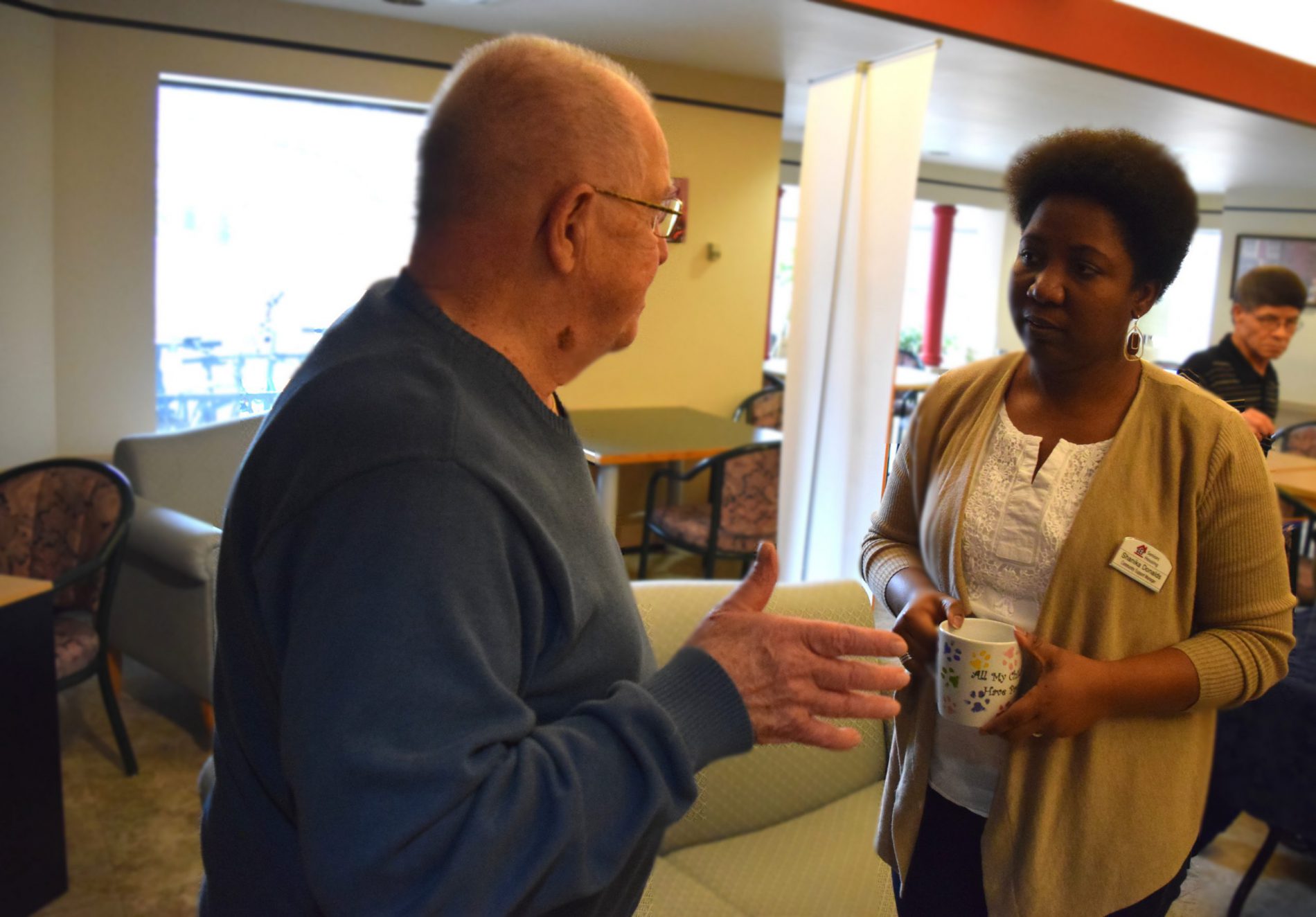
Tim Henderson is the Community Connector and Project Manager for the PEGASIS project with the ESCC and his role is to connect all the seniors serving agencies and see where collaboration works best to help meet the needs of isolated seniors. He explains that this kind of collaboration is a lot of work and takes a lot of commitment and he’s here to help facilitate that collaboration through, “trying to bridge the challenges of government funding and accountability, different organizational cultures, external stakeholders, opportunities, and demands, and help to create a supportive environment for all seniors.”
Reducing social isolation on its surface seems like a straightforward goal, Henderson points out. But once you start breaking down everything that encompasses social isolation, the solutions become much more complicated.
“Research has shown how destructive social isolation can be, and with the social and economic emphasis on individual success with which we live, the risks of, and ballooning costs related to, isolation are enormous as our demographics change and our population ages,” says Henderson. “Aging is something that we are all doing, and ensuring that we get to age well is a collective endeavor. I can’t think of anything more satisfying than working with a group of people to create a population shift in thinking and living.”

Part of the collaborative effort in PEGASIS is ensuring that all the seniors serving agencies in Edmonton know about each other and how their services can help each other and, ultimately, help the seniors who are in need. For example, if a community coordinator with Sage Seniors Association is working with an individual and discovers they can’t get around to see their friends or make it to medical appointments, and it’s affecting their quality of life, that community coordinator with Sage can connect with Drive Happiness to make sure the senior has access to transportation.
“The challenge is honouring the individual agencies and projects while facilitating their learning and capacity to work together in new ways, rather than simply sharing information about what they are doing,” says Henderson.
Henderson also has a clear view as to what success looks like for PEGASIS. “There are two parts to success for PEGASIS,” he explains. “The first will be the real collaboration of the seven partners working together to map out and create a meaningful and workable plan to reduce social isolation now and in the future. The second part will be the expansion of the group collaboration so that we truly are the pan-Edmonton group addressing the social isolation of seniors.”

Donalds explains that her team, with their specific mandate to serve seniors living in GEF Seniors Housing buildings, has its collection of challenges. Residents and tenants living in GEF Seniors Housing buildings pride themselves in living independently, so for many asking for help feels like submitting their independence.
“It’s the opposite where we’re working to ensure that the residents can keep living independently and have access to all the essential services they need while still having those meaningful connections,” says Donalds.
But for every bit of pushback that Donalds may see from the people she works with, she just as often sees seniors immediately acknowledging they need help and embracing what the Community Supports team has to offer.
“One of my proudest achievements is when I get a call from a senior who saw a poster or a brochure and they took the initiative to seek out help,” says Donalds. “Then, it spreads by word of mouth where seniors tell each other they should call us and that it’s a good thing and we help.”
This story was originally printed in the Edmonton Journal’s Today’s Senior section in partnership with Post Media and the Edmonton Seniors Coordinating Council on October 31, 2016, and in the winter 2016 edition of the Community Connections newsletter. A special big thank you to Loreen Wales from Revive Wellness and Imran Sumra from Our Parent’s Home for their help with this story.
When Chef Ana Maria Muhammad started her career with GEF Seniors Housing, she knew the kitchen at the lodge had a big responsibility.
“I quickly realized that this isn’t a restaurant, this is these seniors’ homes,” Muhammad says. She goes on to explain that she visually notices a huge difference in the people living in the lodge when the food is good. Since taking over the kitchen at Ottewell Place Lodge, she’s opened up the lines to communication not just with the other staff but with the residents as well.
The idea of food playing directly into the quality of life isn’t a novel concept. However, the stigma around bad food in seniors’ homes is prevalent. So more chefs working in senior environments are paying extra close attention to the food they serve and making sure they aren’t putting together menus in solitude.
Registered nutritionist and CEO of Revive Wellness Loreen Wales is excited to see this as a growing trend in senior housing. She previously worked in several hospitals and explained that the food she saw being served to very sick people wasn’t going to do much for their health.
“People have a desire for that sense of empowerment and no one wants to feel like they’re being force-fed something,” Wales says. “Food is exciting! So much of our lives revolve around eating and the food we serve to people shouldn’t just be different components slopped together with no thought to taste.”
Wales explains that seniors are at a greater risk of malnutrition which can lead to a drop in immune response and sarcopenia, a rapid loss of muscle mass in the body. She points out that seniors who eat better tend to live longer and don’t experience as many typical aging issues as quickly.
Chef Imran Sumra, Hospitality Manager at Our Parent’s Home in downtown Edmonton, prides his kitchen on fresh ingredients and quality meals for his menus. He holds both a Red Seal designation and a Diploma in Food and Nutrition Management and uses his wide knowledge base in his kitchen to create meals that follow closely the nutritional needs of seniors while still appealing to the residents’ palettes.
“A lot of seniors start to lose their appetites because of things like medications,” says Sumra. “So there has to be flavour and there have to be meals that they want to eat otherwise they simply won’t have that great quality of life we want them to have.”
Sumra’s focus on fresh ingredients plays into how nutrients from herbs and vegetables are better absorbed into the body when they’re fresh but also the difference in quality. Our Parent’s Home’s kitchen boasts entrees from prime rib and steak to curries and lamb. For Sumra, he knows following budgets is important, but he will focus on quality over cost any day.
For Muhammed, opening up the lines of communication to the residents has meant she’s been able to expand the menu into working with some of the residents’ home recipes while still working within the prescribed guidelines from the Canada Food Guide. GEF Seniors Housing works closely with Revive Wellness to review the menus and ensure that all the important points of nutrition are being met, while still making food that the residents are going to enjoy.
“I love that I get to keep learning about all these different foods,” Muhammed says. “The residents’ feedback helps make sure that everyone in the kitchen is always improving and getting better at what they do to make our residents happy.”
Muhammad’s passion for food easily translated into her work with seniors. “I just think about how much I love my parents,” she says. “And I look at the residents like they’re my parents too. What I serve from my kitchen, I would serve to my parents.”